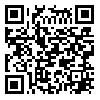BibTeX | RIS | EndNote | Medlars | ProCite | Reference Manager | RefWorks
Send citation to:
URL: http://tumj.tums.ac.ir/article-1-693-en.html
Background: Spider bites are common in most parts of the world. In some areas, where snake or scorpion bites are common, spider bites may not be considered a significant problem by the general public and those who have been bitten by spiders may not go to a hospital. However, significant problems are observed in the victims of certain species of spiders including: widow spider (of the genus Latrodectus), including the black widow and brown spiders (of the genus Loxosceles), such as the brown recluse.
Case: We report a six-year-old boy, admitted to the hospital two weeks after suffering a spider bite. The patient presented with a severe nose bleed, ecchymosis and purpura, as well as anemia, indicating a clotting disorder. Laboratory results revealed abnormal values for prothrombin time (PT) >50 sec, partial thromboplastin time (PTT) >120 min and fibrinogen = 0 mg/dl, whereas factor VIII was normal according to a mixing study, with a normal platelet count of 350,000/µl. The patient was managed with fresh frozen plasma every 12 h, and was discharged one week after hospital admission. At present, the patient is well with more normal laboratory results one month after treatment: PT=13.4 sec, PTT= 34 sec, fibrinogen=105 mg/dl.
Conclusions: Although spider bites are uncommon in Iran, severe systemic reactions may occur in the pediatric population requiring admission to the pediatric intensive care unit. These systemic reactions may include hemolytic anemia coagulopathy and renal failure.
| Rights and permissions | |
 |
This work is licensed under a Creative Commons Attribution-NonCommercial 4.0 International License. |





